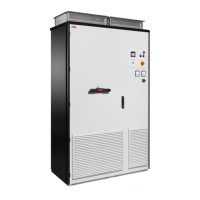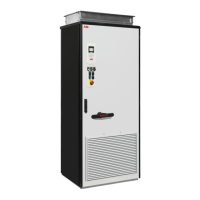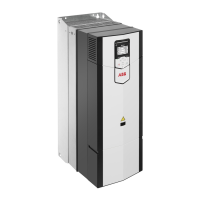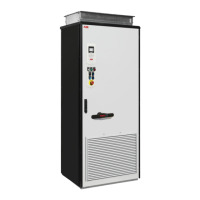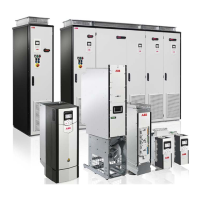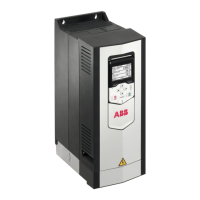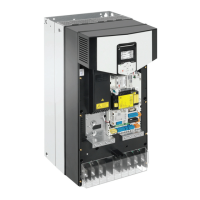402 Parameters
92.10 Excitation signal
frequency
(Visible when a resolver is selected)
Defines the frequency of the excitation signal.
Note: With an EnDat or HIPERFACE encoder and FEN-11
FPGA version VIE12200 or later, this parameter is
automatically set upon validation of encoder settings (91.10
Encoder parameter refresh).
1 kHz
1…20 kHz Excitation signal frequency. 1 = 1 kHz
92.11 Pulse encoder type (Visible when a TTL, TTL+ or HTL encoder is selected)
Selects the type of encoder.
Quadrature
Quadrature Quadrature encoder (with two channels, A and B) 0
Single track Single-track encoder (with one channel, A).
Note: With this setting, the measured speed value is always
positive regardless of direction of rotation.
1
92.11 Absolute position
source
(Visible when an absolute encoder is selected)
Selects the source of the absolute position information.
None
None Not selected. 0
Commut signals Commutation signals. 1
EnDat Serial interface: EnDat encoder. 2
Hiperface Serial interface: HIPERFACE encoder. 3
SSI Serial interface: SSI encoder. 4
Tamagawa Serial interface: Tamagawa 17/33-bit encoder. 5
92.11 Excitation signal
amplitude
(Visible when a resolver is selected)
Defines the rms amplitude of the excitation signal.
4.0 V
4.0 … 12.0 V Excitation signal amplitude. 10 = 1 V
92.12 Speed calculation
mode
(Visible when a TTL, TTL+ or HTL encoder is selected)
Selects the speed calculation mode.
*With a single-track encoder (parameter 92.11 Pulse encoder
type is set to Single track), the speed is always positive.
Auto rising
A&B all Channels A and B: Rising and falling edges are used for
speed calculation.
*Channel B: Defines the direction of rotation.
Note: With a single-track encoder (parameter 92.11 Pulse
encoder type), this setting acts like setting A all.
0
A all Channel A: Rising and falling edges are used for speed
calculation.
*Channel B: Defines the direction of rotation.
1
A rising Channel A: Rising edges are used for speed calculation.
*Channel B: Defines the direction of rotation.
2
A falling Channel A: Falling edges are used for speed calculation.
*Channel B: Defines the direction of rotation.
3
Auto rising One of the above modes is selected automatically depending
on the pulse frequency as follows:
4
No. Name/Value Description Def/FbEq16
Pulse frequency of the
channel(s)
Used mode
< 2442 Hz A&B all
2442…4884 Hz A all
> 4884 Hz A rising

